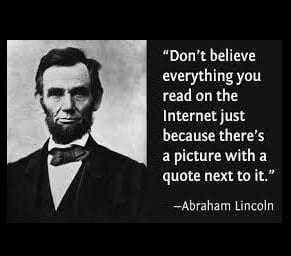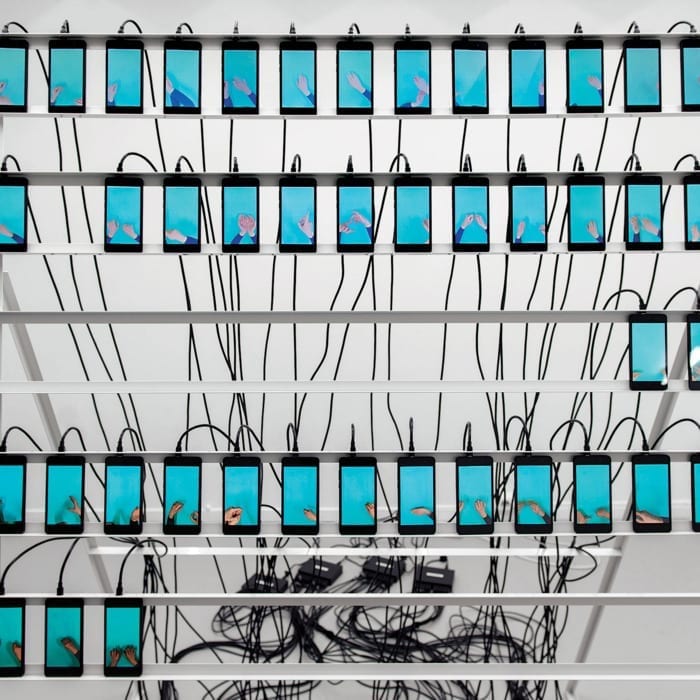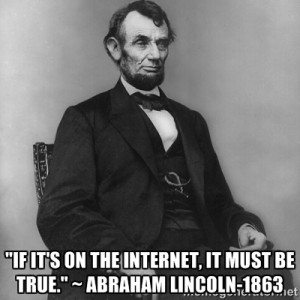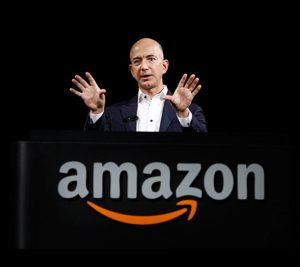– News covered by Quincy Quarry News.
How Much of the Internet Is Fake?
Turns out, a lot of it. A whole lot it
In late November, the Justice Department unsealed indictments against eight people accused of fleecing advertisers of $36 million in two of the largest digital ad-fraud operations ever uncovered.
Digital advertisers tend to want two things: people to look at their ads and “premium” websites — established and legitimate publications — on which to host them.
A version of this article appears in the December 24, 2018, issue of New York Magazine.
The two schemes at issue in the case, dubbed Methbot and 3ve by the security researchers who found them, faked both.
Hucksters infected 1.7 million computers with malware that remotely directed traffic to “spoofed” websites — “empty websites designed for bot traffic” that served up a video ad purchased from one of the internet’s vast programmatic ad-exchanges, but that were designed, according to the indictment.
The goal: to fool advertisers into thinking that an their ads were served on a premium publisher site such as Vogue or The Economist.
Views, meanwhile, were faked by malware-infected computers with marvelously sophisticated techniques to imitate humans: bots “faked clicks, mouse movements, and social network login information to masquerade as engaged human consumers.”
.
How much of the internet is fake? Studies generally suggest that, year after year, less than 60 percent of web traffic is human; some years, according to some researchers, a healthy majority of it is bot-generated.
The internet has always played host in its dark corners to schools of catfish and embassies of Nigerian princes, but that darkness now pervades its every aspect: everything that once seemed definitively and unquestionably real now seems slightly fake; everything that once seemed slightly fake now has the power and presence of the real.
Next up, the metrics are fake.
Take something as seemingly simple as how we measure web traffic. Metrics should be the most real thing on the internet: they are countable, trackable, and verifiable. In turn, their existence undergirds the advertising business that drives our biggest social and search platforms.
Yet not even Facebook, the world’s most largest data–gathering organization, seems able to produce genuine figures. In October, small advertisers filed suit against the social-media giant, accusing it of covering up significant overstatements of the time users spent watching videos on the platform.
According to an exhaustive list at Marketing, over the past two years Facebook has admitted to misreporting the reach of posts on Facebook Pages.
The people are fake.
Then again, maybe we shouldn’t even assume that the people are real. At YouTube, the business of buying and selling video views is “flourishing,” as the Times reminded readers with a lengthy investigation in August. YouTube says only “a tiny fraction” of its traffic is fake, but fake subscribers are enough of a problem that the site undertook a purge of “spam accounts” in mid-December.
However, the Times found, you can buy 5,000 YouTube views — 30 seconds of a video counts as a view — for as low as $15; oftentimes, customers are led to believe that the views they purchase come from real people. More likely, they come from bots.
The businesses are fake.
The money is usually real. Not always — ask someone who enthusiastically got into cryptocurrency this time last year.
Writer and artist Jenny Odell began to look into an Amazon reseller that had bought goods from other Amazon resellers and resold them, again on Amazon, at higher prices. Odell discovered an elaborate network of fake price-gouging and copyright-stealing businesses connected to the cultlike Evangelical church whose followers resurrected Newsweek in 2013 as a zombie search-engine-optimized spam farm.
The content is fake.
The only site which arguably provides more a dizzying sensation of unreality as often as Amazon does is YouTube. TV episodes that been mirror-flipped to avoid copyright takedowns air next to huckster vloggers flogging merchandise who air next to anonymously produced videos that are ostensibly for children.
The now-infamous technology that uses artificial-intelligence image processing to replace one face in a video with another — putting, say, a politician’s over a porn star’s.
A recent academic paper from researchers at the graphics-card company Nvidia demonstrates a similar technique used to create images of computer-generated “human” faces that look shockingly like photographs of real people.
Our politics are fake and which Russia appears to have had a field day fueling.
We are ourselves fake.
Can you retype this distorted word? Can you select the images that contain a motorcycle? Does a Vespa count as a motorcycle?
Where does that leave us?
What’s gone from the internet, after all, isn’t “truth,” but trust: the sense that the people and things we encounter are what they represent themselves to be. Years of metrics-driven growth, lucrative manipulative systems, and unregulated platform marketplaces, have created an environment where it makes more sense to be fake online — to be disingenuous and cynical, to lie and cheat, to misrepresent and distort — than it does to be real.
Fixing that would require cultural and political reform in Silicon Valley and around the world, but it’s our only choice.
Otherwise we’ll all end up on the bot internet of fake people, fake clicks, fake sites, and fake computers, where the only real thing is the ads.
Source: How Much of the Internet Is Fake?
















